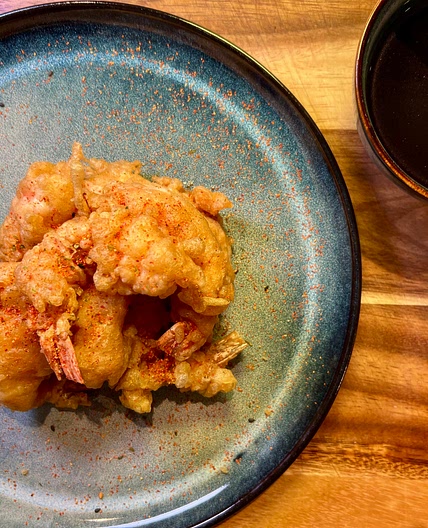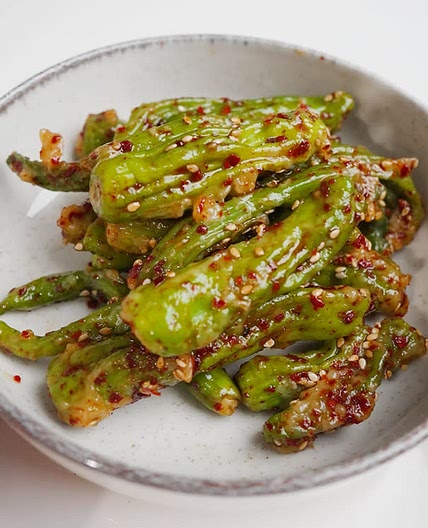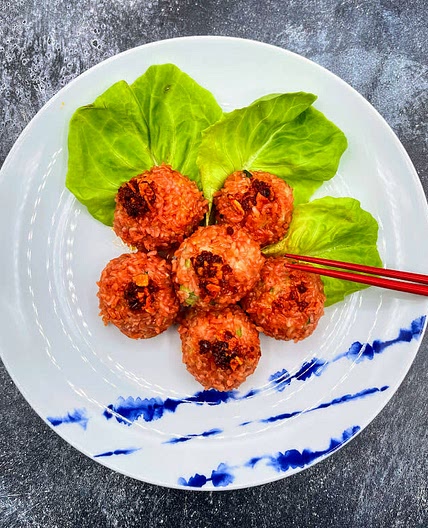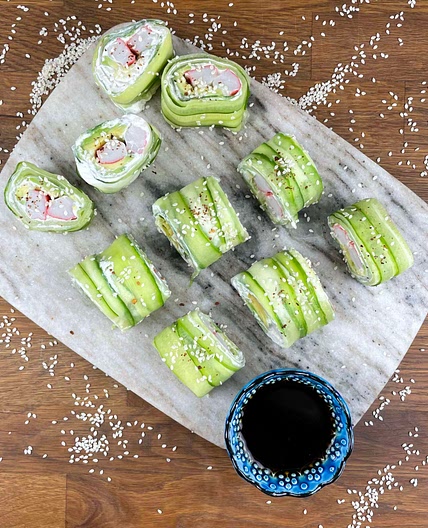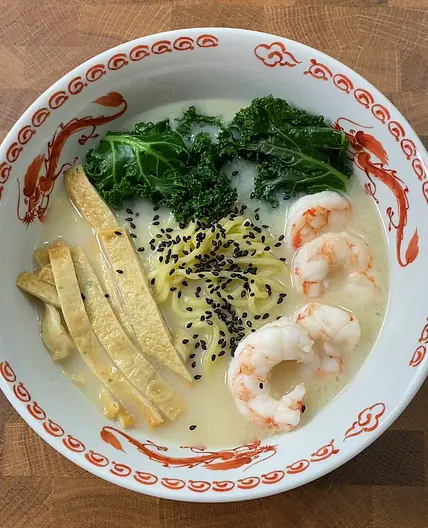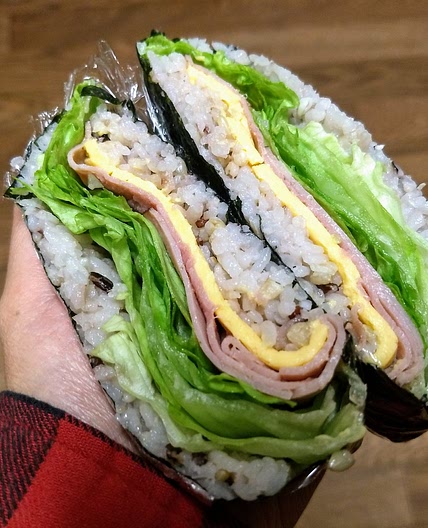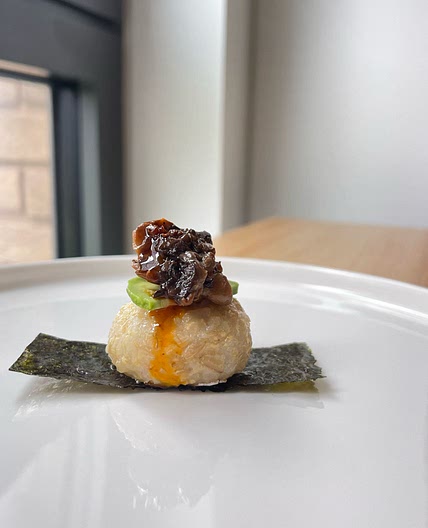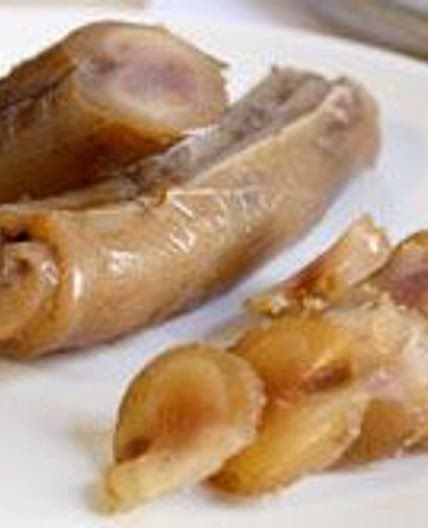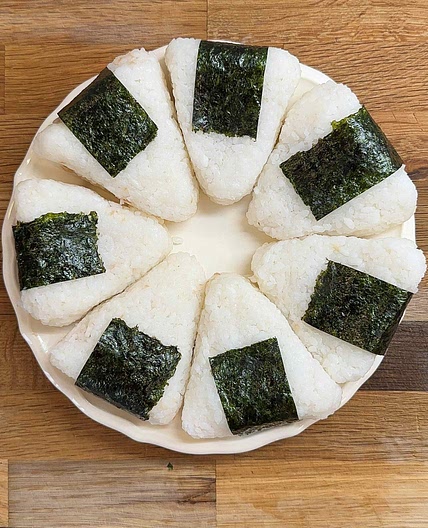By Chris Martin
Red Bean Rice
My mother-in-law made sekihan every farm holiday (when she wasn’t making country sushi rolls). She would pack it in lacquer boxes, lay some leaves from our nandina berry shrub (pictured on the cover), and include a small paper-wrapped packet of roasted sea salt and sesame seeds. She would bike over (even then, a little wobbly) and deliver these boxes to us at our former house a few blocks away (now the site of my little school, Sunny-Side Up!).
In those days I was less accustomed to having food show up on my doorstep, but always welcomed those lacquer boxes of sekihan. I liked the sharp taste of salt on my tongue and the way the beans rolled against the pleasantly sticky rice. I also liked that (in my mind) it went with any food and that it kept for a day or so. Sometimes I felt boxed in a corner if presented with perishable extra food when I already had a tableful. I’ve progressed from that brash young farmwife who chaffed at country customs, and have learned to receive graciously.
While writing this book, I realized that my mother-in-law had not made sekihan in a few years—maybe not even since she began eating dinner at our house every night (after my father-in-law died). Like so many customs, the making of sekihan almost slipped away unnoticed, but now it is Tadaaki’s aunt Katchan or I who make the sekihan and pack it in the lacquer boxes. And someday it will be our sons.
Updated at: Thu, 17 Aug 2023 03:24:53 GMT
Nutrition balance score
Unbalanced
Glycemic Index
81
High
Glycemic Load
36
High
Nutrition per serving
Calories222.7 kcal (11%)
Total Fat1.9 g (3%)
Carbs45.2 g (17%)
Sugars0 g (0%)
Protein5.3 g (11%)
Sodium834.4 mg (42%)
Fiber2.6 g (9%)
% Daily Values based on a 2,000 calorie diet
Ingredients
14 servings
Instructions
Step 1
Starting the day before, soak the azuki for about an hour or so. Drain, add cold water to cover about 2 inches (5 cm) above the beans, and bring to a simmer over medium-high heat. Reduce the heat to low and continue simmering until cooked halfway. Drain the beans and reserve the pink simmering liquid. Once the beans have cooled, chill them in the fridge to use the following day but be sure to take them out a couple of hours before cooking so they can return to room temperature.
Step 2
Wash the glutinous rice until the water runs clear and soak overnight in a medium-sized bowl with the cooled bean simmering liquid. This soak is essential because the bean liquid imparts a lovely pink hue to the rice.
Step 3
Fill a wide, deep, slope-sided pan or wok half full with water and bring to a boil over high heat.
Step 4
Drain the mochi gome and mix it with the half-cooked beans in a medium-sized bowl until the beans are well distributed into the rice. Line a steamer basket with a thin muslin cloth and dump in the rice and beans. Poke a 2-inch (5-cm) hole in the center of the rice with your finger to give the rice space to expand. Fold the edges of the cloth in loosely (leaving a small air vent in the center to allow steam to escape) and cover. Set the steamer basket above but not touching the boiling water.
Step 5
Steam over high heat for about 15 to 20 minutes, until there is a strong blast of visible steam rising from the rice (signaling that, not just the steaming water, but the rice itself has taken on intense heat). Uncover the steamer and open the muslin cloth. Sprinkle a little bit of water on the surface of the rice and beans (uchi mizu), rewrap (leaving a vent hole), and re-cover. Do this two or more times. It will take from 30 to 40 minutes for the rice to steam. As the rice steams, the hole you poked will swell and almost disappear. Check the doneness by inserting a chopstick into the rice. If you feel resistance or roughness, the rice is not yet done; if the chopstick slides in nicely, the rice is done. Of course, this is subjective. Some people like a bit of bite to their grains, and some people prefer them quite soft. Use your best judgment by tasting it.
Step 6
While the sekihan is cooking, roast the sea salt over low heat in a small pan to remove any lingering dampness. Scrape into a small bowl. Toast the sesame seeds over medium-high heat, shaking the pan, until they pop. Add to the salt in the bowl and combine with a small spoon.
Step 7
When the rice and beans are finished cooking, dump them into a large, shallow wooden tub (handai) or the back of a wide wooden cutting board. Cut, spread, and fluff with a rice paddle to cool.
Step 8
Pack in lacquer boxes and, if you have them, set a small sprig of leaves snipped from a nandina shrup on top of the rice as a natural preservative. (Katchan also dusts a minute amount of sugar over the sekihan to help keep it soft.) Serve sprinkled with toasted sesame seeds and roasted salt. Keeps at room temperature for a couple of days, depending on the weather.
Notes
0 liked
0 disliked
There are no notes yet. Be the first to share your experience!


